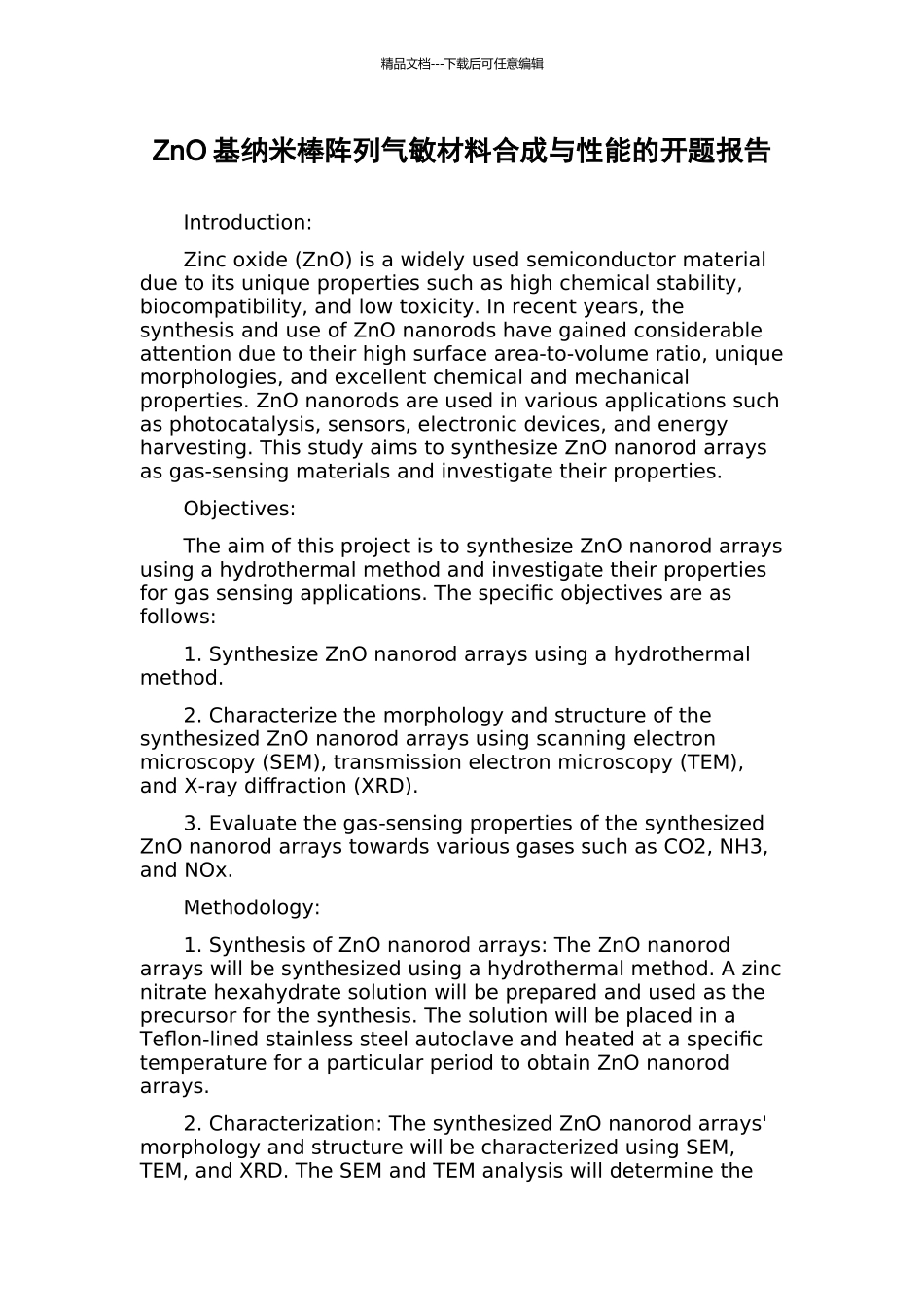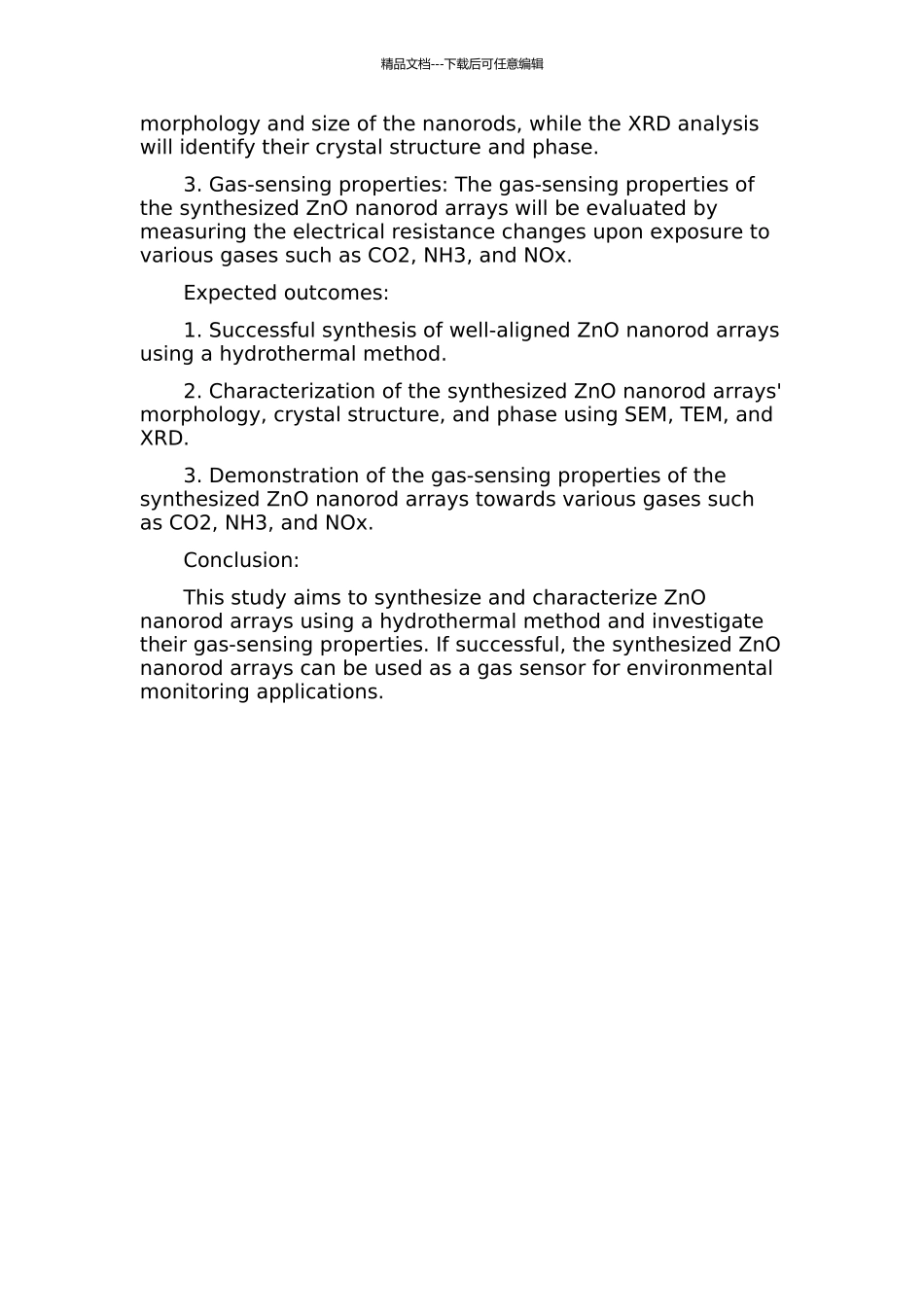精品文档---下载后可任意编辑ZnO 基纳米棒阵列气敏材料合成与性能的开题报告Introduction:Zinc oxide (ZnO) is a widely used semiconductor material due to its unique properties such as high chemical stability, biocompatibility, and low toxicity. In recent years, the synthesis and use of ZnO nanorods have gained considerable attention due to their high surface area-to-volume ratio, unique morphologies, and excellent chemical and mechanical properties. ZnO nanorods are used in various applications such as photocatalysis, sensors, electronic devices, and energy harvesting. This study aims to synthesize ZnO nanorod arrays as gas-sensing materials and investigate their properties.Objectives:The aim of this project is to synthesize ZnO nanorod arrays using a hydrothermal method and investigate their properties for gas sensing applications. The specific objectives are as follows:1. Synthesize ZnO nanorod arrays using a hydrothermal method.2. Characterize the morphology and structure of the synthesized ZnO nanorod arrays using scanning electron microscopy (SEM), transmission electron microscopy (TEM), and X-ray diffraction (XRD).3. Evaluate the gas-sensing properties of the synthesized ZnO nanorod arrays towards various gases such as CO2, NH3, and NOx.Methodology:1. Synthesis of ZnO nanorod arrays: The ZnO nanorod arrays will be synthesized using a hydrothermal method. A zinc nitrate hexahydrate solution will be prepared and used as the precursor for the synthesis. The solution will be placed in a Teflon-lined stainless steel autoclave and heated at a specific temperature for a particular period to obtain ZnO nanorod arrays.2. Characterization: The synthesized ZnO nanorod arrays' morphology and structure will be characterized using SEM, TEM, and XRD. The SEM and TEM analysis will determine the 精品文档---下载后可任意编辑morphology and size of the nanorods, while the XRD analysis will identify their crystal structure and phase.3. Gas-sensing properties: The gas-sensing properties of the synthesized ZnO nanorod arrays will be evaluated by measuring the electrical resistance changes upon exposure to various gases such as CO2, NH3, and NOx.Expected outcomes:1. Successful synthesis of well-aligned ZnO nanorod arrays using a hydrothermal method.2. Characterization of the synthesized ZnO nanorod arrays' morphology, crystal structure, and phase using SEM, TEM, and XRD.3. Demonstration of the gas-sensing properties of the synthesized ZnO nanorod arrays towards various gases such as CO2, NH3, and NOx.Conclusion:This study aims to synthesize and characterize ZnO nanorod arrays using a hydrothermal method and investigate their gas-sensing properties. If successful, the synthesized ZnO nanorod arrays can be used as a gas sensor for environmental monitoring applications.

